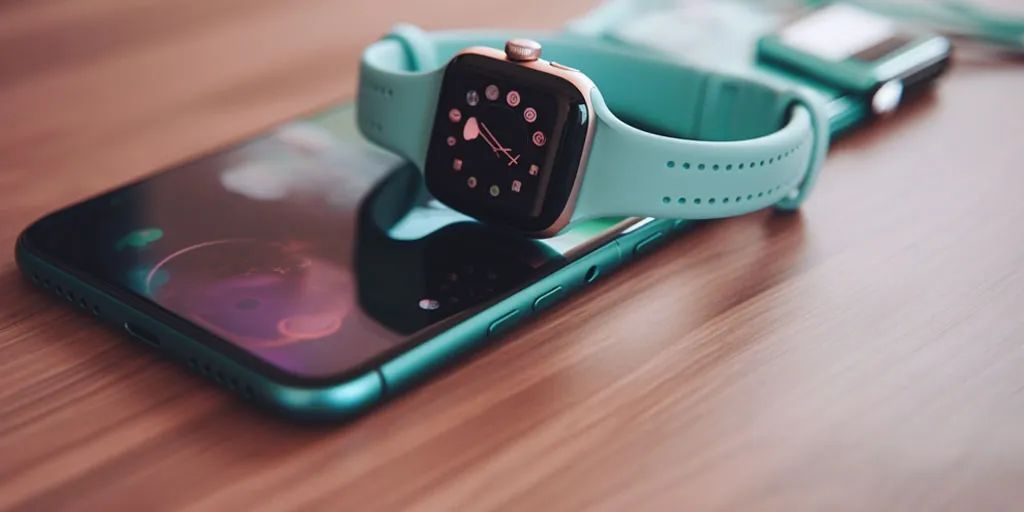Click the blue text below the title to follow me and not get lost↑
Smart watches are rapidly replacing traditional toys on the wrists of contemporary children. This “electronic nanny,” which integrates calling, positioning, and payment functions, is quietly rewriting children’s growth trajectories while providing parents with a false sense of security. While we marvel at the convenience of technology, we must also be vigilant about the growth traps wrapped in digital candy.
Today’s smart watches seem to have surpassed their original purposes of positioning, calling, and emergency assistance, becoming another small world in the hands of children and teenagers.
We often say that children should minimize their use of electronic screens. Does frequent use of smart watches make them more prone to myopia? Should we buy one for our children? How should they be used correctly?
What adverse effects do smart watches have on eye health?
According to the “2022-2027 China Children’s Smart Watch Industry Deep Research and Investment Prospect Forecast Report” by the China Industry Research Institute, there are approximately 170 million children aged 5 to 12 in China, with a market penetration rate of about 30% for children’s smart watches, meaning that 1 in 3 children uses a smart watch.
This age group is in a sensitive period for eye and refractive development, and poor eye habits can easily push children towards myopia.
Increased risk of myopia
We all know that the recommendation for electronic product use in myopia prevention is that the larger and further the screen, the better, with the order of preference being TV > tablet > mobile phone.
Common mobile phone screen sizes are usually between 5-7 inches, while the screen size of smart watches is only 1.3-1.78 inches. This is understandable, as it is a wristwatch, and children’s wrists are thin; a larger screen would significantly affect the wearing experience.

However, for the eyes,the closer the screen and the smaller the display font, the higher the demand on the ciliary muscle’s adjustment function, and the low resolution of smart watches can easily cause micro fluctuations in adjustment. Overuse of adjustment and convergence functions can even lead to esotropia.
Additionally, because the peripheral hyperopic defocus caused by near viewing is greater than that caused by distance viewing, during the sensitive period of eye development, peripheral retinal hyperopic defocus signals can easily induce axial elongation, promoting the occurrence and development of myopia. This is why we emphasize looking at distant objects.
Moreover, the small screen size of smart watches makes it easy for children to unconsciously bring the device closer, exacerbating already unfavorable screen conditions.
For children, smart watches are more accessible and portable than mobile phones and tablets. Without effective supervision, they can easily become addicted. If they are playing games or chatting with friends under the covers before bed, a small, bright screen in a dark environment can cause glare, further increasing visual fatigue.
Thus, we see why some children, even those who have not yet started elementary school, are wearing glasses at such a young age. Proper eye care and scientific use of electronic devices are areas that require more attention from parents.
What adverse effects do smart watches have on mental health?
1. Visible protection vs. invisible costs A recent case in a top-tier hospital’s pediatrics department involved a 10-year-old boy who developed wrist joint strain, sleep disorders, and pseudomyopia due to prolonged use of a smart watch. This is not an isolated case; studies show that continuous exposure to blue light can suppress melatonin secretion, delaying children’s sleep time by an average of 47 minutes. More insidiously, the electromagnetic radiation from devices close to the skin, while within safe thresholds, may have cumulative effects on the developing nervous system. Behind these visible conveniences lies an invisible cost to children’s physiological health. 2. Cognitive development: The crisis of precocity in a digital cage Observations in a second-grade classroom showed that students wearing smart watches were distracted an average of 6.8 times per class, with their attention fragmentation three times that of ordinary students. Child psychologists have found that instant message notifications are destroying deep thinking abilities, voice assistants are replacing independent exploration, and payment functions are dissolving the process of forming a concept of money. Even more concerning is that the “transparent prison” created by positioning functions hinders children from establishing a sense of independent space, while commercial information pushed by apps is fostering precocious consumer attitudes. 3. Social alienation: Real loneliness behind virtual socializing In a local playground, it has become commonplace to see children sitting in a circle, each fiddling with their watches. Surveys show that 68% of children prefer to send voice messages via their watches rather than communicate face-to-face. When likes on social media replace real interactions, voice messages diminish emotional management skills, and positioning functions undermine trust relationships, children are losing the most precious opportunities for social enlightenment. Even more alarmingly, some brands’ built-in “tap to add friends” feature is creating new social anxiety and comparison chains.
How to break free from the harms of smart watches?
1. Set strict usage periods
In our home, the watch can only be used for calls after school; at other times, it is put away. While children are still young, parents must control the usage time.
2. Establish a “digital Sabbath” family agreement
On weekends, we need to create a family agreement with the children: parents do not look at their phones, and children do not look at their smart watches, and we all adhere to it. It is difficult to ask children not to use their watches if parents do not set an example.
3. Regularly conduct “watch disconnection” parent-child activities
Mindfully accompany children in their growth, engage in more parent-child activities, and participate in outdoor activities. This not only enhances parent-child relationships but also protects children’s eyes. Children’s growth requires not a 24-hour online electronic shackle, but a space for exploration filled with blanks and unknowns. When we put smart watches on our children, perhaps we should first ask: What are we really protecting, and what are we losing? True protection should teach children how to maintain a clear self in the digital age, rather than weaving a gentle cage with technology.
Let go of expectations, invest sincerely, and wait patiently for the flowers to bloom!
You are welcome to reach out to me anytime for discussion~
